DVDs for Christmas: Dance | reviews, news & interviews
DVDs for Christmas: Dance
DVDs for Christmas: Dance
You too can go to the ballet, by switching on your DVD player - it might even be better than in the theatre
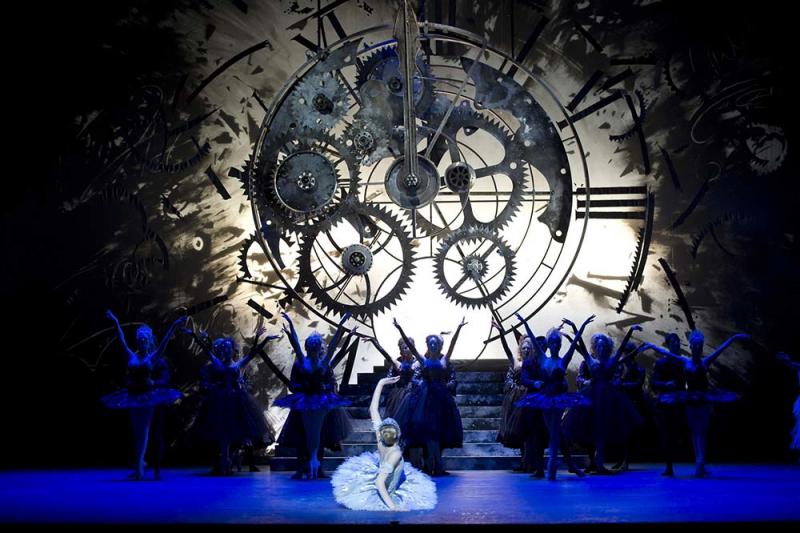
Ballet has had a difficult relationship with filming for a long time, not only as regards permissions and copyrights from all the people involved, but also in how to frame and light for film a spectacle and action conceived and judged for the stage, live before an audience of a thousand. Perhaps such things held the Royal Ballet back for decades, while the Paris Opera Ballet, the Kirov and the Bolshoi energetically set cameras rolling on their great stars and landmark productions.
But suddenly it’s all changed and Covent Garden is pouring out ballet DVDs of this generation of dancers, and it’s evident that the goalposts have been moved in many directions. It must make financial sense to sell hundreds of thousands of DVDs of a show that may be seen live in the theatre by only tens of thousands at most, but it is also a boon to the non-London public that film standards have become so much higher that they too can go to the ballet, just by switching on their DVD player.
As more and more choreographers use digital and video effects on stage, and as more and more people take their music electronically, so ballet productions in today’s flatter, simpler sets seem to feel very much at home on film. In this round-up of recommended recordings of great classical ballets, I’ve been fascinated to see how productions that feel thin or inconsistent in the live experience can find their natural berth on film. It would be no wonder if conceiving ballets for filming is gradually becoming an equal or greater concern to creating it for the stage audience.
So it's a discovery to find that both Birmingham Royal Ballet’s Cinderella and the Royal Ballet’s Alice’s Adventures in Wonderland - the past 12 month’s big domestic releases of classics - look very fine on film, and if you missed them in the theatre, the DVDs are possibly an even better way to experience them.
The predominance of Royal Ballet DVDs here is the nature of the beast: their latest release is an all-Ashton disc that provides a rare banquet for those who want to know this Mozart of ballet better, in times when his work is rarer and rarer on stage, and its fate somewhat uncertain. And as this Thursday Covent Garden is beaming a live relay of its new Sleeping Beauty production, it seems apposite to revisit both this production’s parent (whose costumes have now been changed again) and the famously controversial 1994 production, to compare not only artistic visions for this most artificial and art-demanding of works, but also the ballerinas of the Noughties and Nineties, Alina Cojocaru and Viviana Durante.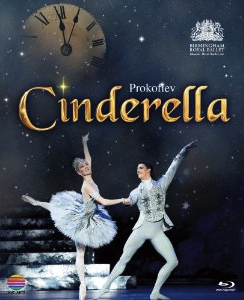 Birmingham Royal Ballet, Cinderella (Warner)
Birmingham Royal Ballet, Cinderella (Warner)
This may be the most succulent DVD experience of ballet I’ve ever seen. David Bintley created a new Cinderella for BRB last Christmas to rival the company’s fabulous Nutcracker as a seasonal offering, and by using the same designer Bintley ensured he pulled off another dream of a show. John Macfarlane’s designs are painterly miracles that turn simple constructions into tricks of genius - a distressed marble kitchen like something out of Restoration Nightmare has a fireplace like a cauldron where magical things happen, the midnight clock is a nightmare of cogs and time. Stars spangle the night sky, unearthly mists ripple, the fairy dresses seem to be made of wisps of cloud. Every little girl surely will want to be a Star, just to wear those dazzling tutus, and even more to leap into that truly fairy coach. Film brings these things to your eye even better than in the theatre.
Perhaps Bintley and Macfarlane had the DVD as their destination when they conceived this - certainly their down-to-earth character-drawing, with a realistically beaten-down Cinderella and two mean Ab Fab sisters, suits the camera. The spirited Carol-Ann Millar stands out a treat as dumpy sister, pink-cheeked, sly, her wicked face not missing a trick, and dancing with pizzazz in a fat suit. Elisha Willis’s spontaneous Cinders with bare feet and sooty nose and a poignant smile of hope will be loved by shy children anywhere. Her sweet unaffectedness as an actress and her fresh, mobile face are more important for the camera here than her lack of the highest classical distinction later at the ball. Ian Mackay’s Prince similarly is a man for wearing the costume well rather than proving himself in stylistic aristocracy.
Though Bintley’s choreography is muted in detail and scale (certainly by comparison with Frederick Ashton), it is demanding; the recording of Prokofiev’s picturesque score is clean and dynamic under conductor Koen Kessels, and the lighting is wizard. A top-notch film ballet treat.
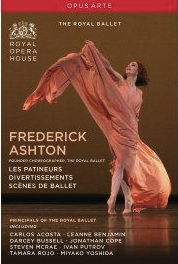 Royal Ballet, Frederick Ashton: Les Patineurs, Divertissements, Scènes de Ballet (Opus Arte)
Royal Ballet, Frederick Ashton: Les Patineurs, Divertissements, Scènes de Ballet (Opus Arte)
Seven Ashton ballets on one disc - what a thrill. The recordings cover seven years which also means you get the retired Darcey Bussell, Miyako Yoshida and Viacheslav Samodurov in full Ashtonian flood alongside today’s Tamara Rojo and Sarah Lamb. A new taping of his skating ballet Les patineurs underlines that this is no kiddies’ ballet - this is delicious, grown-up wit, as the choreographer decided to imagine skaters on stage without knowing a single skating move. The result is better than Torvill and Dean. Lamb and Rupert Pennefather make a butter-wouldn’t-melt leading White Couple, Steven McRae is brilliant if camp as the spinning Blue Boy, the ancient costumes are eye-blasting (particularly the males’ turquoise and brown) and the vivacity of it is all-conquering.
The Divertissements and Scènes de ballet were recorded in 2004. The diverts sample some of the gala jewels that Ashton made, and which are so hard to programme nowadays. Best is the exquisitely sexy 1939 duet Devil’s Holiday, in which Laura Morera and Ricardo Cervera melt and swoon in Arcadian costumes to Baroque music. Tamara Rojo becomes a magnetic, mystical Isadora Duncan, Samodurov shows his grand solemnity in the Devil’s Holiday reconstructed solo and Leanne Benjamin and Carlos Acosta whizz through the electrifying Voices of Spring waltzing duet. Neither the ravishingly acrobatic Thaïs duet nor the ravishingly innocent Awakening pas de deux from The Sleeping Beauty is done to perfection (effortful Mara Galeazzi/Thiago Soares and too straightforward Bussell/Jonathan Cope), which you notice because Morera’s subtle eroticism with Cervera makes the scales fall from your eyes. Ashton’s women are all about having secrets, changing their mind in the middle of an arm swish, caprice, declaration, capitulation, and never showing the seams.
There's hardly a greater sense of mystery in any ballet than in Ashton’s masterpiece Scènes de ballet (a desert-island must, as far as I’m concerned) and it’s good to see a taping of it, especially with the fine Ivan Putrov showing his unforced grace and balance partnering the neat, musical Yoshida. Actually I’d love to see someone less “petite” in style than she in this astonishing, faintly surreal creation with its Parisian cocktail tutus, provocative quartets and eerie night-time viaduct. Throughout the disc, the men are impressive - that’s the Noughties Royal Ballet. Conductor Barry Wordsworth makes the Stravinsky sound particularly well, attending to dancers’ caution without sacrificing edge, and the solo violin playing by the ROH Orchestra’s leader Vasko Vasiliev is succulent throughout.
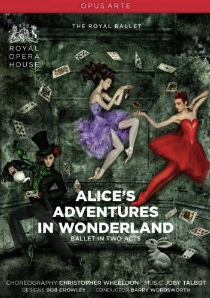 Royal Ballet, Alice’s Adventures in Wonderland (Opus Arte)
Royal Ballet, Alice’s Adventures in Wonderland (Opus Arte)
Christopher Wheeldon’s full-evening ballet on Lewis Carroll’s classic children’s book this year was the first full-length new production at the Royal Ballet for 16 years, which contributed to my disappointment at it being so blatantly child-oriented. But it works rather better as a film than as a stage experience so that I wonder if its concept and target fundamentally was Christmas DVD rather than adult Covent Garden - after all, it potentially has a much larger audience on DVD.
Alice's Adventures in Wonderland is almost blindingly colourful, packed by the brilliant Bob Crowley with scenery tricks, sweet-coloured costumes and furry heads that borrow nothing from Tenniel or Disney. Kiddies possibly do need to know their Alice to get maximum familiarity. However, the pop-up postcard designs and video wizardry, the photogenic cuteness of leading girl Lauren Cuthbertson’s face, the episodic sketchiness of events and characters, all become benefits framed in film, lighter, swifter pleasures at the beck and call of your remote control buttons. Every character seems to be there, from the Duchess to the Dormouse, all dreamed up as vividly as an acid trip. Joby Talbot’s music is constantly entertaining, picturesque and fluent in its storytelling, the current that holds the entire show together.
That Wheeldon’s choreography is the weakest part of the collaboration matters a bit less when camera edits can pick out faces or details to enrich the capering - and you can pause to explain to your tot what this next bit is while you go back to your book.
The extras include a routine half-hour backstage documentary containing the diverting sight of Cuthbertson sewing her pointe shoes on the Tube. The rehearsal interviews promise a more interesting character study of Alice than actually emerges, sad to say.
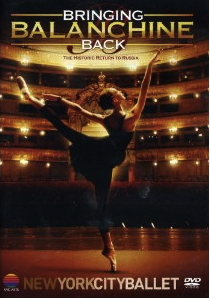 New York City Ballet, Bringing Balanchine Back, a film by Richard Blanshard (Warner)
New York City Ballet, Bringing Balanchine Back, a film by Richard Blanshard (Warner)
This documentary about NYCB’s 2004 tour to the Mariinsky Ballet in St Petersburg took nearly six years to emerge, and though it’s lost some topicality in the meantime, it is still an absorbing account of culture-clash politics. George Balanchine, founder and genius choreographer of New York City Ballet, was raised in St Petersburg and trained in the Mariinsky (then the Kirov), before he left Russia to join Sergei Diaghilev’s Ballets Russes in Europe, and thence to America. He took his New York company back to his native city twice in Soviet Cold War times, but remained largely rejected as a traitor. So the NYCB trip in 2004, as headline guests at the Mariinsky Theatre’s White Nights Festival, was a statement of principles: showing the Russians what they’d given up when they turned their backs on the most important choreographer in 20th-century world ballet. Mariinsky chief Valery Gergiev, the internationalist who invited NYCB, talks fervently of “restoring the missing page” in Russian ballet history. Peter Martins, NYCB chief, proves even more autocratic and fearsome than Gergiev is famous for being.
The dancing extracts include marvels from Wendy Whelan in Agon and Glass Pieces, and a curious Serenade led by the obviously stiffening Darci Kistler, Balanchine’s last muse when he died in 1983. But suddenly, in the ballet’s haunting finish, Kistler goes wild, and the hairs stood up on my neck to see it. The cameras turn to the applauding audience, and a woman at the front is wiping tears from her eyes - just so.
There is an interesting backstage interview with Alexandra Ansanelli, an uncertain new NYCB principal who would shortly quit to join the Royal Ballet. She appears to bring out the most draconian qualities of her ballet master. There is even more fascinating stuff about the recalcitrance of the Mariinsky orchestra, with NYCB conductor Andrea Quinn (formerly of the Royal Ballet) struggling to understand their arcane rules about changing instrumentalists between rehearsal and performance. Then Gergiev vanishes with orchestra in an interval to rehearse the next piece - the interval becomes endless.
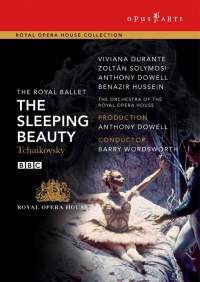 Royal Ballet, The Sleeping Beauty, 1994 (Opus Arte)
Royal Ballet, The Sleeping Beauty, 1994 (Opus Arte)
This is the notorious production designed by the gifted but wayward Maria Bjørnson, looking something like Versailles going down in the Titanic at an Aubrey Beardsley party. Gargantuan pillars lurch, stairs swirl in astigmatic ovals, costumes seem to sprout noisy metal scales, etched trompes-l’oeil are flooded with turquoise and purple. It was the most expensive and epic of modern productions under Anthony Dowell’s directorship and it should have been something wondrous and durable, proudly bearing arms for contemporary classical ballet design. The sets and costumes have been destroyed now, and three subsequent productions of The Sleeping Beauty, ever tamer, more expensive and more floral, have replaced it, but people in the industry still mourn Bjørnson’s extraordinary costumes and unorthodox provocative imagination.
The trouble was - as this film confirms - that those arresting diagonals and vertiginous views turned the dancers into midgets and the choreography into tatting. The skewing distractions of Bjørnson’s set are most uncomfortable in the Prologue, the grand ritual christening at which the good fairies and bad cast their blessings and curses on the baby Aurora. The camera direction echoes the odd angles, which doesn’t suit the fairy solos at all, choreographed to be seen from the front. But some soloists look downright gawky, evidence that Dowell’s Royal Ballet was no great technical shakes at that time.
Benazir Hussein’s glorious smile could light the world but it can’t hide that she could not manage the Lilac Fairy’s solos. Zoltan Solymosi was perhaps the handsomest man who ever joined the Royal Ballet, with a practised set of poses to offer, but as the Prince here shows his lack of elevation and awkwardness in turns. Erroll Pickford is the one eyecatching dancer as a flying Blue Bird while as Carabosse Dowell, despite his Alice Cooper make-up, is terrifying, every scrap of mime a fresh syllable of vindictiveness. It’s a reminder of the expressive gift that he brought, subsumed more subtly, into his performing as a leading dancer.
Viviana Durante’s Aurora is cool, tiny and immaculately bred, her smiles not reaching her dark eyes. She has an artist playing the violin for her solo, Vasko Vasiliev, the Opera House Orchestra’s then leader, yet somehow the music doesn’t seep into her thoughts - she’s always looking sharply to see where she’s going to put her pretty foot down. But maybe, in all the design palaver, that's what she had to do.
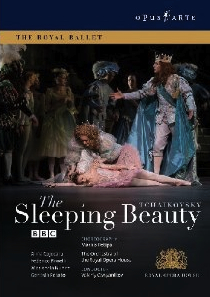 Royal Ballet, The Sleeping Beauty, 2007 (Opus Arte)
Royal Ballet, The Sleeping Beauty, 2007 (Opus Arte)
The joy that’s wanting in Durante’s Aurora is found in bucketfuls in the irresistible Alina Cojocaru, another tiny ballerina, but with a boundless warmheartedness. There is nothing occluded about her. You do believe that this Aurora grew up with all the bountiful qualities bestowed on her by the fairies. Cojocaru fits like a pink rose into the most Home Counties of productions, a hybrid that recreates most of the 1946 Oliver Messel sets for the production starring Fonteyn that reopened Covent Garden after the war and populates them with new Peter Farmer costumes in sugared-almond colours. This autumn Farmer has redesigned all the costumes to be much closer to the brighter Messel ones - which you may see in a live cinema relay this Thursday from the Royal Ballet’s current run of performances.
Truth be told, this is a pallid, old-fashioned design by comparison with the misapplied panache of Bjørnson’s one. Though it makes pretty enough pictures on film, what’s missing is a dimension of mystery and surprise, at the falling asleep of the castle, at the awakening. What would John Macfarlane do with those, considering his stunning midnight hour for Cinderella, and his awesome Christmas tree transformation for the Birmingham Royal Ballet Nutcracker?
But back to the dancing. Cojocaru is paired with the correct Federico Bonelli, a much better dancer than Solymosi on the earlier version, but with less presence. Her Lilac Fairy is Marianela Nuñez, whose smile is nearly as contagious as Benazir Hussein’s but who is a far finer dancer. Among the soloists, Isabel McMeekan is aptly cast as the fairy of purity, Laura Morera as the fairy of passion, and Sarah Lamb is a porcelain Princess Florine. Although the dancing standard is higher than in the 1994 film, there is still a lack of relish in articulating the steps, a prim petiteness. Valery Ovsyannikov conducts steadily and warmly, with Sergey Levitin this time the vibrant solo violinist.
Buy
Explore topics
Share this article
Add comment
more Dance
 All You Need Is Death review - a future folk horror classic
Irish folkies seek a cursed ancient song in Paul Duane's impressive fiction debut
All You Need Is Death review - a future folk horror classic
Irish folkies seek a cursed ancient song in Paul Duane's impressive fiction debut
 MacMillan Celebrated, Royal Ballet review - out of mothballs, three vintage works to marvel at
Less-known pieces spanning the career of a great choreographer underline his greatness
MacMillan Celebrated, Royal Ballet review - out of mothballs, three vintage works to marvel at
Less-known pieces spanning the career of a great choreographer underline his greatness
 Carmen, English National Ballet review - lots of energy, even violence, but nothing new to say
Johan Inger's take on Carmen tries but fails to make a point about male violence
Carmen, English National Ballet review - lots of energy, even violence, but nothing new to say
Johan Inger's take on Carmen tries but fails to make a point about male violence
 WAKE, National Stadium, Dublin review - a rainbow river of dance, song, and so much else
THISISPOPBABY serves up a joyous tapestry of Ireland contemporary and traditional
WAKE, National Stadium, Dublin review - a rainbow river of dance, song, and so much else
THISISPOPBABY serves up a joyous tapestry of Ireland contemporary and traditional
 Swan Lake, Royal Ballet review - grand, eloquent, superb
Liam Scarlett's fine refashioning returns for a third season, and looks better than ever
Swan Lake, Royal Ballet review - grand, eloquent, superb
Liam Scarlett's fine refashioning returns for a third season, and looks better than ever
 First Person: Ten Years On - Flamenco guitarist Paco Peña pays tribute to his friend, the late, great Paco de Lucía
On the 10th anniversary of his death, memories of the prodigious musician who broadened the reach of flamenco into jazz and beyond
First Person: Ten Years On - Flamenco guitarist Paco Peña pays tribute to his friend, the late, great Paco de Lucía
On the 10th anniversary of his death, memories of the prodigious musician who broadened the reach of flamenco into jazz and beyond
 Dance for Ukraine Gala, London Palladium review - a second rich helping of international dancers
Ivan Putrov's latest gala was a satisfying mix of stars and young hopefuls
Dance for Ukraine Gala, London Palladium review - a second rich helping of international dancers
Ivan Putrov's latest gala was a satisfying mix of stars and young hopefuls
 Nelken: A Piece by Pina Bausch, Sadler's Wells review - welcome return for an indelible classic
A new generation of gifted performers for us to get to know
Nelken: A Piece by Pina Bausch, Sadler's Wells review - welcome return for an indelible classic
A new generation of gifted performers for us to get to know
 Dark With Excessive Bright, Royal Ballet review - a close encounter with dancers stripped bare
The Royal's Festival of New Choreography launches with an unforgettable walk in the dark
Dark With Excessive Bright, Royal Ballet review - a close encounter with dancers stripped bare
The Royal's Festival of New Choreography launches with an unforgettable walk in the dark
 La Strada, Sadler's Wells review - a long and bumpy road
Even the exceptional talents of Alina Cojocaru can't save dance adaptation of Fellini film
La Strada, Sadler's Wells review - a long and bumpy road
Even the exceptional talents of Alina Cojocaru can't save dance adaptation of Fellini film
 First Person: pioneering juggler Sean Gandini reflects on how the spirit of Pina Bausch has infiltrated his work
As Tanztheater Wuppertal Pina Bausch's 'Nelken' comes to Sadler’s Wells, a tribute from across the art forms
First Person: pioneering juggler Sean Gandini reflects on how the spirit of Pina Bausch has infiltrated his work
As Tanztheater Wuppertal Pina Bausch's 'Nelken' comes to Sadler’s Wells, a tribute from across the art forms
 Manon, Royal Ballet review - a glorious half-century revival of a modern classic
Fifty years on, Kenneth MacMillan's crash-and-burn anti-heroine is riding high
Manon, Royal Ballet review - a glorious half-century revival of a modern classic
Fifty years on, Kenneth MacMillan's crash-and-burn anti-heroine is riding high

Comments
How I disagree with you about
I much prefer Maria Maria